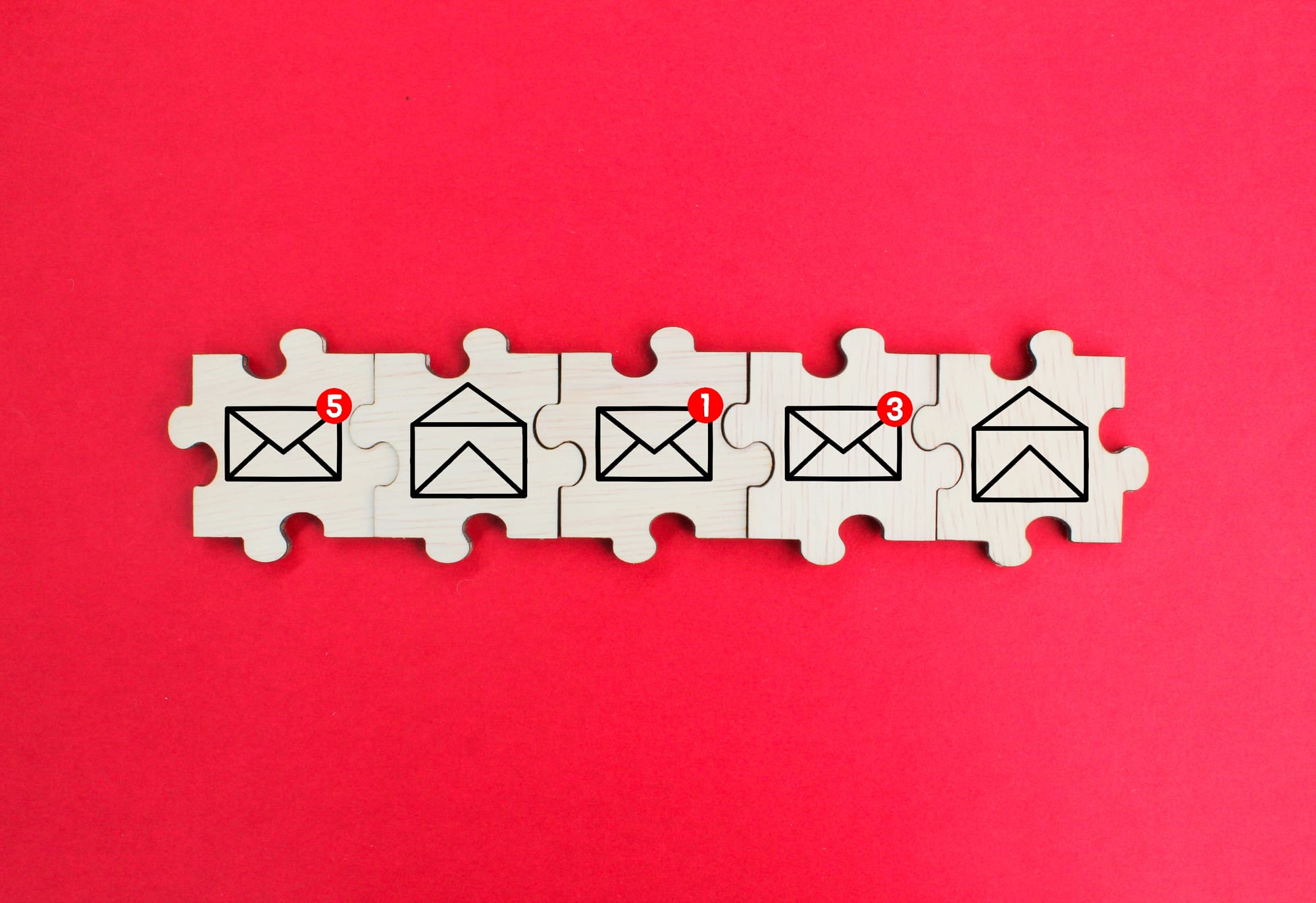Introduction
To maximize the effectiveness of your email marketing campaigns, it's essential to analyze and optimize your efforts based on data-driven insights. Most email marketing platforms provide analytics that give you valuable metrics such as open rates, click-through rates, and conversion rates. By tracking these metrics, you can identify what works and what doesn't, allowing you to refine your email content, subject lines, CTAs, and overall strategy. A/B testing is another valuable technique where you compare different versions of your emails to see which performs better. Regularly monitoring and optimizing your email campaigns will help you improve engagement, increase conversions, and ultimately achieve your marketing goals.
The Importance of Email Analytics
Email analytics provide crucial insights into the performance of your campaigns. By understanding how your emails are being received and interacted with, you can make informed decisions to enhance your strategy. Here are some key reasons why email analytics are important:

Measure Success
Analytics allow you to measure the success of your email campaigns. By tracking metrics such as open rates, click-through rates, and conversion rates, you can gauge the effectiveness of your content and identify areas for improvement.
Understand Subscriber Behavior
By analyzing subscriber behavior, you can gain insights into what resonates with your audience. This includes understanding which subject lines, content types, and CTAs drive the most engagement.
Optimize Campaigns
Data-driven insights enable you to optimize your campaigns. By identifying what works and what doesn't, you can make adjustments to improve performance and achieve your marketing goals.
Enhance Personalization
Analytics can help you enhance personalization. By understanding subscriber preferences and behaviors, you can tailor your content to meet their needs and increase engagement.
Key Email Marketing Metrics
To effectively analyze and optimize your email campaigns, it's important to track key metrics. Here are some of the most important metrics to monitor:

Open Rate
The open rate measures the percentage of recipients who open your email. A high open rate indicates that your subject line and sender name were compelling enough to capture attention. To improve your open rate, focus on creating attention-grabbing subject lines and building a strong sender reputation.
Click-Through Rate (CTR)
The click-through rate measures the percentage of recipients who clicked on a link within your email. This metric helps you gauge the effectiveness of your content and CTAs. To increase your CTR, ensure that your email copy is engaging and that your CTAs are clear and compelling.
Conversion Rate
The conversion rate measures the percentage of recipients who completed the desired action, such as making a purchase or signing up for a webinar. This metric indicates how successful your email was in driving conversions. To boost your conversion rate, focus on delivering high-value content and strong CTAs.
Bounce Rate
The bounce rate measures the percentage of emails that were not delivered successfully. A high bounce rate can indicate issues with your email list quality or deliverability. To reduce your bounce rate, regularly clean your email list and ensure that your emails comply with deliverability best practices.
Unsubscribe Rate
The unsubscribe rate measures the percentage of recipients who opted out of your email list after receiving your email. A high unsubscribe rate can indicate that your content is not meeting subscriber expectations. To reduce your unsubscribe rate, ensure that your emails provide value and that you are targeting the right audience.
Spam Complaints
Spam complaints measure the number of recipients who marked your email as spam. A high number of spam complaints can harm your sender reputation and affect your deliverability. To minimize spam complaints, ensure that your emails comply with anti-spam regulations and provide an easy way for subscribers to opt out.
Using A/B Testing to Optimize Campaigns
A/B testing, also known as split testing, is a technique where you compare two different versions of an email to see which one performs better. Here are some steps to effectively use A/B testing:

Identify What to Test
Decide which elements of your email you want to test. Common elements to test include subject lines, email copy, images, CTAs, and send times. Focus on one variable at a time to get clear results.
Create Variations
Create two variations of the email with the different elements you want to test. Ensure that all other elements remain constant to accurately measure the impact of the variable being tested.
Split Your Audience
Divide your audience into two equal segments. Send one variation to each segment and track the performance of each version.
Analyze Results
After the test is complete, analyze the results to determine which variation performed better. Use metrics such as open rates, click-through rates, and conversion rates to evaluate performance.
Implement Changes
Based on the results of your A/B test, implement the changes to your email campaigns. Continuously test and optimize to improve your email marketing strategy.
Leveraging Advanced Analytics
Beyond basic metrics, advanced analytics can provide deeper insights into your email marketing performance. Here are some advanced analytics techniques to consider:

Heatmaps
Heatmaps visually represent how recipients interact with your emails. They show which areas of your email get the most clicks and engagement. Use heatmaps to identify which parts of your email are most effective and where improvements can be made.
Subscriber Segmentation Analysis
Analyze the performance of different segments within your email list. This can help you understand how different groups of subscribers respond to your content and identify opportunities for more targeted campaigns.
Cohort Analysis
Cohort analysis involves grouping subscribers based on shared characteristics or behaviors and analyzing their performance over time. This technique can help you identify trends and patterns in subscriber engagement and retention.
Predictive Analytics
Predictive analytics uses historical data and machine learning algorithms to predict future subscriber behavior. Use predictive analytics to anticipate subscriber needs and deliver more relevant content.
Best Practices for Email Analytics and Optimization
To maximize the effectiveness of your email analytics and optimization efforts, follow these best practices:
Set Clear Goals
Define clear goals for your email campaigns. This will help you focus on the most important metrics and measure success accurately.
Track Key Metrics
Regularly track key metrics to monitor the performance of your campaigns. Use the insights gained to make data-driven decisions and optimize your strategy.
Test and Iterate
Continuously test different elements of your emails to identify what works best. Use A/B testing and other techniques to optimize your campaigns and improve performance.
Use Segmentation
Segment your email list to deliver more targeted and relevant content. Analyze the performance of different segments to refine your approach and increase engagement.
Monitor Deliverability
Ensure that your emails are being delivered to the inbox by monitoring deliverability metrics. Address any issues promptly to maintain a good sender reputation.
Tools for Email Analytics and Optimization
There are several tools available to help you analyze and optimize your email marketing campaigns. Here are some popular options:

Google Analytics
Google Analytics provides comprehensive insights into how your email campaigns drive traffic and conversions on your website. Use it to track the performance of your campaigns and measure their impact on your overall marketing strategy.
Mailchimp
Mailchimp offers robust analytics and reporting features that allow you to track key metrics and optimize your email campaigns. Use Mailchimp to set up A/B tests, segment your audience, and analyze performance.
Constant Contact
Constant Contact provides detailed analytics and reporting tools to help you measure the success of your email campaigns. Use it to track key metrics, test different elements, and optimize your strategy.
HubSpot
HubSpot offers advanced analytics and reporting features for email marketing. Use it to track the performance of your campaigns, analyze subscriber behavior, and optimize your content.
Real-World Examples of Email Analytics and Optimization
Case Study 1: Grammarly
Grammarly uses email analytics and optimization to improve the performance of their email campaigns. By tracking key metrics and using A/B testing, they identified that personalized subject lines and content led to higher open and click-through rates. They also used heatmaps to understand how subscribers interacted with their emails and made adjustments to improve engagement.
Case Study 2: Dropbox
Dropbox leverages email analytics to optimize their onboarding emails. By analyzing metrics such as open rates and activation rates, they identified which emails were most effective at driving user activation. They used A/B testing to refine their email copy and CTAs, resulting in a significant increase in user engagement and activation.
Case Study 3: Airbnb
Airbnb uses advanced analytics to optimize their email marketing strategy. By analyzing subscriber behavior and segment performance, they identified opportunities for more targeted campaigns. They used predictive analytics to anticipate subscriber needs and deliver personalized content, resulting in higher engagement and conversion rates.
Future Trends in Email Analytics and Optimization
AI and Machine Learning
Artificial intelligence (AI) and machine learning are transforming email analytics and optimization. AI can analyze vast amounts of data to predict subscriber behavior and deliver highly personalized content. Machine learning algorithms can optimize email send times, subject lines, and content for better engagement.
Real-Time Analytics
Real-time analytics provide immediate insights into the performance of your email campaigns. Use real-time data to make quick adjustments and optimize your strategy on the fly.
Predictive Analytics
Predictive analytics uses historical data and machine learning algorithms to predict future subscriber behavior. Use predictive analytics to anticipate subscriber needs and deliver more relevant content.

Conclusion
Email analytics and optimization are essential for maximizing the effectiveness of your email marketing campaigns. By tracking key metrics, conducting A/B testing, and leveraging advanced analytics, you can make data-driven decisions to enhance your strategy. Continuously monitor and optimize your campaigns to improve engagement, increase conversions, and achieve your marketing goals.
HAVE YOUR OWN WRITING, MARKETING, PUBLISHING COACH 24/7 FOR PENNIES PER DAY!
SAVE TODAY ONLY! Click this link now: https://www.authorutopia.com/signup/
BECOME A MEMBER OF OUR ELITE COMMUNITY OF ASPIRING AUTHORS AND ENTREPRENEURS AND BE A RISING STAR FASTER THAN YOU EVER DREAMED POSSIBLE.
Click the link below now to get our best offer ever: https://www.authorutopia.com/signup/HAVE YOUR OWN WRITING, MARKETING, PUBLISHING COACH 24/7 FOR PENNIES PER DAY!
SAVE TODAY ONLY! Click this link
now: https://www.authorutopia.com/#/portal/signup
BECOME A MEMBER OF OUR ELITE COMMUNITY OF ASPIRING AUTHORS AND ENTREPRENEURS AND BE A RISING STAR FASTER THAN YOU EVER DREAMED POSSIBLE. Click the link below now to get our best offer ever: https://www.authorutopia.com/#/portal/signup


